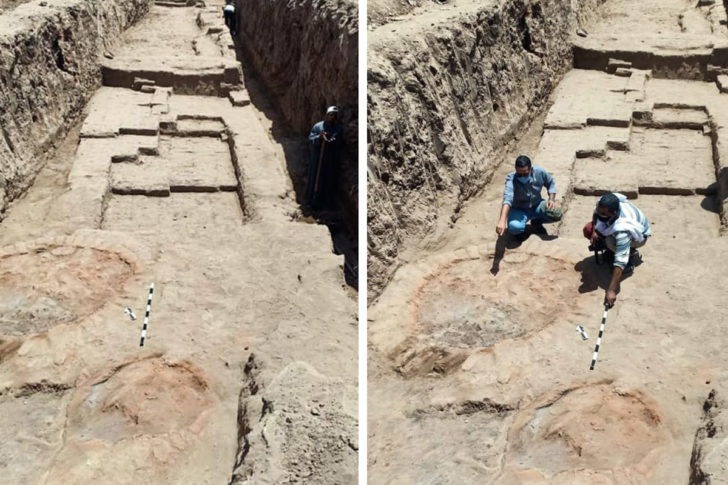Last summer, excavations of the Kebbash road, leading from Luxor to Karnak in Egypt, revealed circular kilns, a mud brick wall and a sandstone wall.
An astonishing discovery
Last summer, the Egyptian Ministry of Tourism and Antiquities announced the discovery of ancient walls and ovens along the road to Kebbash, the sphinx-lined avenue that links Luxor to the great temple of Amun at Karnak.

Archaeologists have uncovered the structures while conducting excavations associated with an ongoing restoration project. The discovery includes several round kilns that may have been used to fire terracotta bricks or pottery and a terracotta brick wall dating from the end of the Roman Empire, which extended from approximately the third to the fifth century AD.
A wall from Karnac to Luxor
The wall, found to the west of the Kebbash road, is more than 30 metres long, 2.5 metres high and 3 metres wide. The team has also identified a sandstone wall that stretches from Karnak in the north to Luxor in the south, a distance of more than three kilometres. Organised in three horizontal rows of sandstone blocks, the barrier was built to protect the eastern banks of the Nile from seasonal flooding.
Thousands of years ago, the road to Kebbash played a key role in the Opet, an ancient Egyptian festival held during the second month of the lunar calendar. According to Al-Masry Al-Youm of Egypt Independent, pharaohs celebrated the Opet by conducting holy processions with boats decorated and filled with statues. The public stood on both sides of the road, cheering and dancing as the parade passed by.
A giant open-air museum
In 2017, four years after the opening of the historic promenade to the public, the Egyptian government announced its intention to transform the space into a giant open-air museum. This project, which aims to restore the road to its former glory, is part of a wider effort to develop tourism in the Luxor region.
However, the renovations, which were originally scheduled for completion in 2018, have been repeatedly postponed. Seasonal dampness threatens visible sandstone structures, including the 1,200 or so sphinxes lining the road to Kebbash, and new discoveries have put wider plans on hold as extensive excavations begin.
Four sphinxes moved to Cairo
At the beginning of this year, the authorities moved four ram-headed sphinxes from the rear of the Karnak temple to Cairo’s Tahrir Square. The statues are distinct from those on the Kebbash Road but have a similar design.
This decision drew much criticism from archaeologists, who pointed out that placing the sphinxes in a city centre would expose them to dangerous environmental conditions. « These statues are made of sandstone and come from Luxor, where the weather is dry, » Monica Hanna, an archaeologist at the Arab Academy of Science, Technology and Maritime Transport, told Magdy Samaan of The Times in January. « When they are placed in Cairo, the second most polluted city in the world, it will destroy them ».



